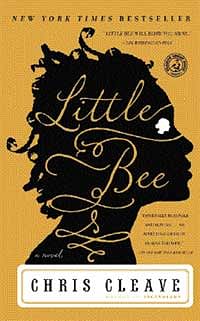Judging a book by its cover

Wiles noticed that the woman looked about her age, 45, and was carrying a yoga mat, so she figured that they were like-minded and leaned in to catch the title: Little Bee, a novel by Chris Cleave. Wiles, a graduate student in nonfiction writing, tapped a note into her iPhone and bought the book later that week.
Such encounters are becoming increasingly difficult. With a growing number of people turning to Kindles and other electronic readers, it is not always possible to see what others are reading or to project your own literary tastes. You can’t tell a book by its cover if it doesn’t have one.
“There’s something about having a beautiful book that looks intellectually weighty and yummy,” said Wiles, who recalled that when she was rereading Anna Karenina recently, she liked that people could see the cover on the subway. “You feel kind of proud to be reading it.” With a Kindle or Nook, she said, “people would never know.”
Among other changes heralded by the e-book era, digital editions are bumping book covers off the subway, the coffee table and the beach. That is a loss for publishers and authors, who enjoy some free advertising for their books in printed form: If you notice the jackets on the books people are reading on a plane or in the park, you might decide to check out The Girl With the Dragon Tattoo or The Help too.
“So often when you’re thinking of a book, you remember its cover,” said Jeffrey C Alexander, professor of cultural sociology at Yale. “It’s a way of drawing people through the visual into reading.” In the bookstore, where a majority of sales still take place, covers play a crucial role.
Perhaps no other element of the book-making process receives as much input from as many different people as the jacket. First, a creative director comes up with an idea. Then the book’s editor, author and agent have a look. The publisher of the imprint gets involved. The sales force makes comments. Even booksellers have an opinion. A good jacket is unlikely to save a bad book, of course. But in a crowded market, a striking cover is one advantage all authors and publishers want.

Even in the digital era, publishers believe that books need graphic representations — if only for the online marketing campaign. Regardless of the format, “they all seem to need what we know of as a cover to identify them,” said Chip Kidd, associate art director at Alfred A Knopf. Kidd has designed more than 1,000 jackets for authors including Cormac McCarthy and James Ellroy.
“We often get requests to make the type bigger,” said Mario J Pulice, creative director for the adult trade division of Little, Brown & Company. “Because when it’s on Amazon, you can’t read the author’s name.” As publishers explore targeted advertising on Google and other search engines or social networking sites, they figure that a digital cover remains the best way to represent a book.
Some readers expect makers of electronic devices to add functions that allow users to broadcast what they’re reading. “People like to show off what they’re doing and what they like,” said Maud Newton, a popular book blogger. “So eventually there will be a way for people to do that with e-readers.”
For now, many publishers are counting on the Facebook effect. “Before, you might see three people reading Eat, Pray, Love on the subway,” said Clare Ferraro, president of Viking and Plume, imprints of Penguin Group USA. “Now you’re going to log onto Facebook and see that three of your friends are reading Eat, Pray, Love.”
Even avid online networkers rely on physical book covers in the real world. Heather E Johnson, 32, who writes reviews on her blog, was recently at one of her son’s hockey games when she noticed a copy of Diana Gabaldon’s Outlander lying open on the bleachers. When a friend returned to claim it, Johnson asked for an opinion. “She said it was fabulous,” Johnson recalled. As soon as Johnson got home, she moved the title up her “to be read” list.
“I don’t know that I would start a conversation with someone about something they were reading on an e-reader,” Johnson added. “It might not be something that they want anyone to know that they’re reading.”
Some digital publishers suspect that one of the reasons romance and erotica titles are so popular in electronic editions is that e-readers are discreet. Book jackets, though, still matter.
Holly Schmidt, president of Ravenous Romance, an e-book publisher of romance and erotica, said that in one case the publisher was offering an anthology of stories about older women and younger men. The first version featured a digital cover image of a winsome woman. It barely sold any copies. The publisher put a new cover up online — this time showing the bare, muscular torsos of three young men — and sales took off. The new cover “took a book that was pretty much a loser,” Schmidt said, “and made it into a pretty strong seller.”